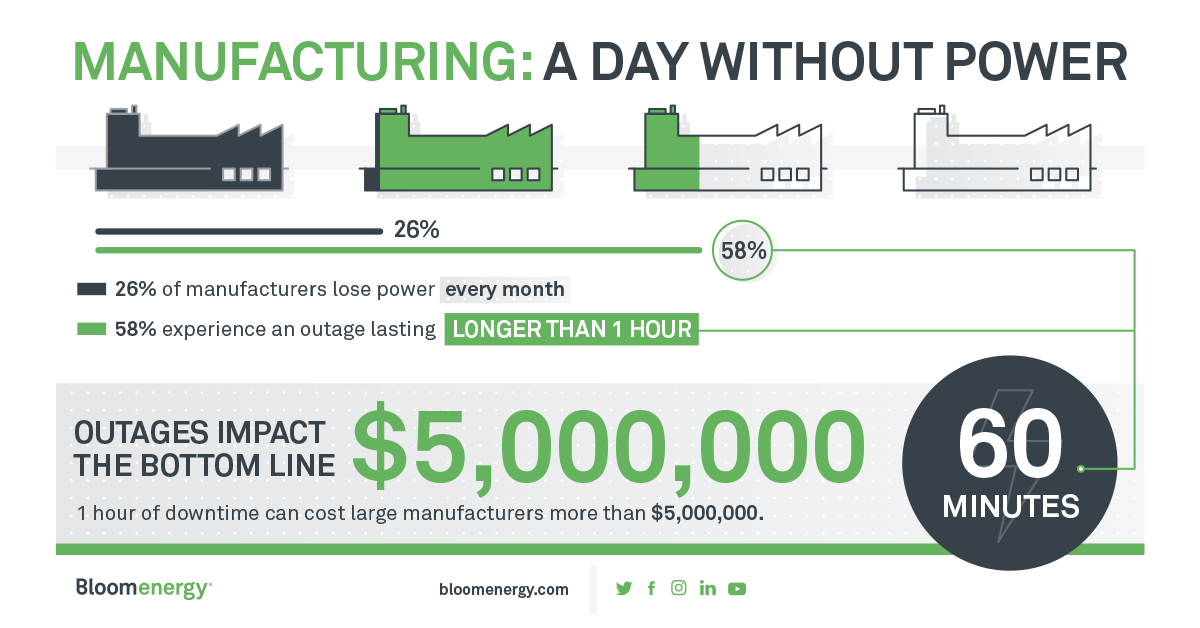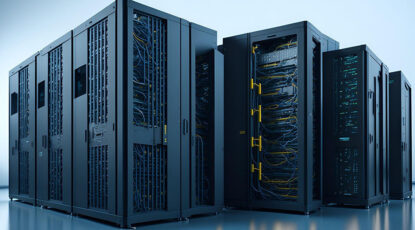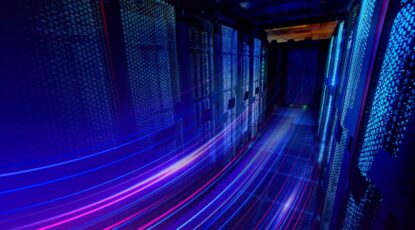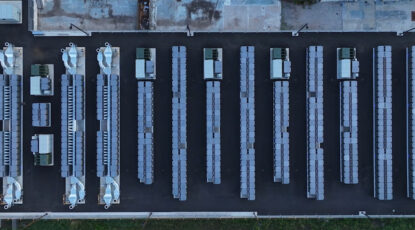Frequent power outages are becoming an unfortunate norm for U.S. businesses. A 2018 survey found that one in four companies experience a power outage at least once a month. These outages are not mild inconveniences – the costs are quickly rising to be board room-level issues.
For large companies, the cost of an outage can escalate into the millions of dollars per hour of downtime. In fact, the DoE recently estimated that outages are costing the U.S. economy $150 billion annually.
As extreme weather events integrate into the nation’s DNA, energy challenges and power supply disruptions are becoming more and more common. Hurricanes, heatwaves, wildfires, and storms are impacting the bottom line for companies across the U.S.
In California, utilities have implemented public safety power shutoffs (PSPS) in an attempt to mitigate the risk of wildfires, instructing customers to prepare for proactive outages lasting several days at a time. On the East Coast, recent heat waves and storms caused blackouts for hundreds of thousands of customers in New York and New Jersey.
The traditional choice of backup power for businesses to keep the lights on during outages is diesel generators; however, combustion-based generators are not the answer to today’s energy blackouts. Typical diesel generator exhaust contains more than 40 toxic air contaminants, including a variety of carcinogenic compounds.
And despite the harmful health and climate effects of diesel generators, the fact remains that the technology is an inadequate reliability solution for prolonged outages. Because diesel generators are idle assets that sit unused 99% of the time, they face a high risk for start-up failures without diligent, continuous maintenance.
The power sources that top businesses rely on should be resilient and always on; they should address both the causes and consequences of climate change. Business continuity needs to be a top board room issue, and ensuring reliable energy must be part of every company’s strategy. Don’t wait until it’s too late.
See how you can protect your business from power outages.
These are five major industries that are particularly at risk, and they each play a substantial role in progressing the nation toward a more resilient energy future.
Data Center
Data centers store and manage data for a wide range of companies. When they go down, a whole suite of businesses that rely on them for their mission-critical data storage are impacted.
Today’s data centers have a few technical solutions in place to reduce the impact of power outages, such as data center mirroring or cloud computing. However, the frequency of outages continue to increase.
Uptime’s 8th annual Data Center Survey found that 31% of 900 respondents experienced downtime in 2018, a whopping 25% year-over-year increase. In the past three years, 48% of respondents said they had suffered downtime, with power problems identified as the number one cause.
For example, a lightning storm in Texas in September 2018 interrupted grid power to Microsoft’s San Antonio Azure data center, knocking cooling systems offline, damaging equipment, and bringing down Active Directory and Visual Studio Team Services for almost 24 hours.
Studies have shown that the cost of a U.S. data center outage has grown to $8,851 per minute. Now consider a full day outage – 24 hours of downtime alone could result in costs exceeding $12 million.
Manufacturing
In manufacturing operations, even seemingly small power flickers can cause significant impact. Manufacturers are especially vulnerable to equipment damage during outages; electrical surges may occur when power is restored, resulting in costly damage to critical equipment that is difficult to repair.
For high volume manufacturers, a power outage can mean disruption that ripples through the entire supply chain. Shipping and receiving can come to a standstill, causing truck drivers and other means of transportation to be delayed or rescheduled.
A recent survey found that more than a quarter of manufacturing businesses experienced an outage at least once a month in 2017, with 58% reporting an outage lasting longer than an hour. For large manufacturing enterprises, a single hour of downtime tops the $5 million mark.
Microgrid Knowledge offered this example to illustrate the potential costs of outages for manufacturers: consider a car manufacturer that makes about 1,200 cars a day, and the cost for each car is roughly $50,000. Just one day offline would cost the manufacturer $60 million.

Retail
According to a recent report, one in three retailers lost power at least once a month in 2017, and about 40% of those outages left retailers without power for longer than an hour. Considering most retailers interact with the public daily, frequent power interruptions have an extended, collateral impact.
Consider a single supermarket – because of an outage, it could see hundreds of thousands of dollars in losses from perishable goods being spoiled by lack of refrigeration. For example, a supermarket in Pennsylvania lost power for more than a day in February of 2019; the owner estimated losses of up to $30,000 in merchandise. For large retailers, that cost is even higher, reaching upwards of $5 million.
And it’s not just about lost goods or lost sales; what about customer dissatisfaction?
Reputations are tarnished when businesses are not able to effectively serve their customers; visitors who experience an interruption may leave with negative perceptions of the business and be less likely to return.
Healthcare
Hospital power systems must run smoothly 24 hours a day, 7 days a week, 365 days a year – patient lives rely on the power being always on.
That’s why hospitals are required to have backup equipment, usually diesel generators, to ensure life-sustaining equipment stays on throughout an outage. However, these generators are often unreliable and require regular testing and maintenance to ensure they come on when they’re needed most.
During Hurricane Sandy, 16% of emergency medical services organizations reported diesel generators not performing as expected, according to the American College of Emergency Physicians. Six hospitals completely shut down, forcing 6,400 patients to be evacuated. Some affected facilities remained closed for more than 100 days.
Just last year, Hurricane Irma knocked out grid power to more than 200 Florida hospitals and nursing homes, leaving many running on back-up generators with only enough fuel on hand to last a few days.
And even when they do run according to plan, diesel generators are harmful to local air quality, and can cause or exasperate respiratory illnesses. It is the responsibility of a hospital to be a community steward, and this should extend to their energy use. Diesel generators are a detriment to local air quality and should not be a part of a 21st century healthcare power approach.
Education
Campuses have a diverse and unique set of energy challenges. They tend to be built over time – usually over the span of decades – with new buildings that serve different functions cropping up year after year. Because of this, electrical connections can be a complex issue, putting a wide variety of processes at risk of power disruptions.
When the power goes out, critical equipment like elevators, cold storage, and air conditioners may be damaged and require repair, rendering them out of service for days or more. Oftentimes, damage occurs when power returns, with sudden electric surges resulting in wrecked equipment.
Perhaps even worse yet, critical data storage facilities and IT services can be impacted when campuses lose power. Outages bring down campus wireless networks, causing online and in-person classrooms that rely on the internet or digital programs to come to a standstill.
In 2018, an outage at Stanford University turned off power in about one third of campus buildings, resulting in cancelled classes and halted lab research work due to safety concerns regarding affected ventilation systems.
Microgrids keep businesses running through outages
Data centers, manufacturers, retailers, hospitals, and universities are all turning to microgrids in the pursuit of energy resiliency.
Microgrids are sources of power that can operate independently of the main electrical grid indefinitely. As outages increase in frequency and duration, this ability to continue powering commercial and industrial operations through grid outages is proving increasingly valuable.
Bloom Energy’s new microgrid offering enables businesses to protect themselves from power disruptions. The AlwaysON Microgrid Solution, providing clean on-site power, is the 21st century answer to extended grid outages (planned or unplanned) and extreme weather disruption. In 2018 alone, Bloom microgrids powered facilities through 550+ outages. Find out more here.



